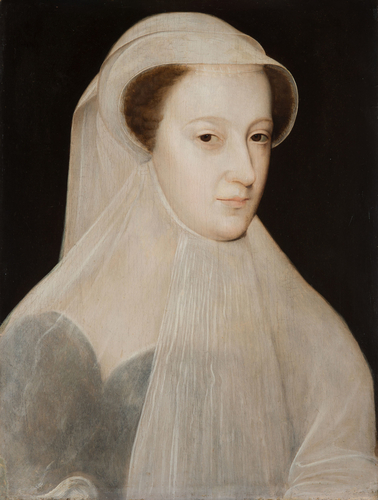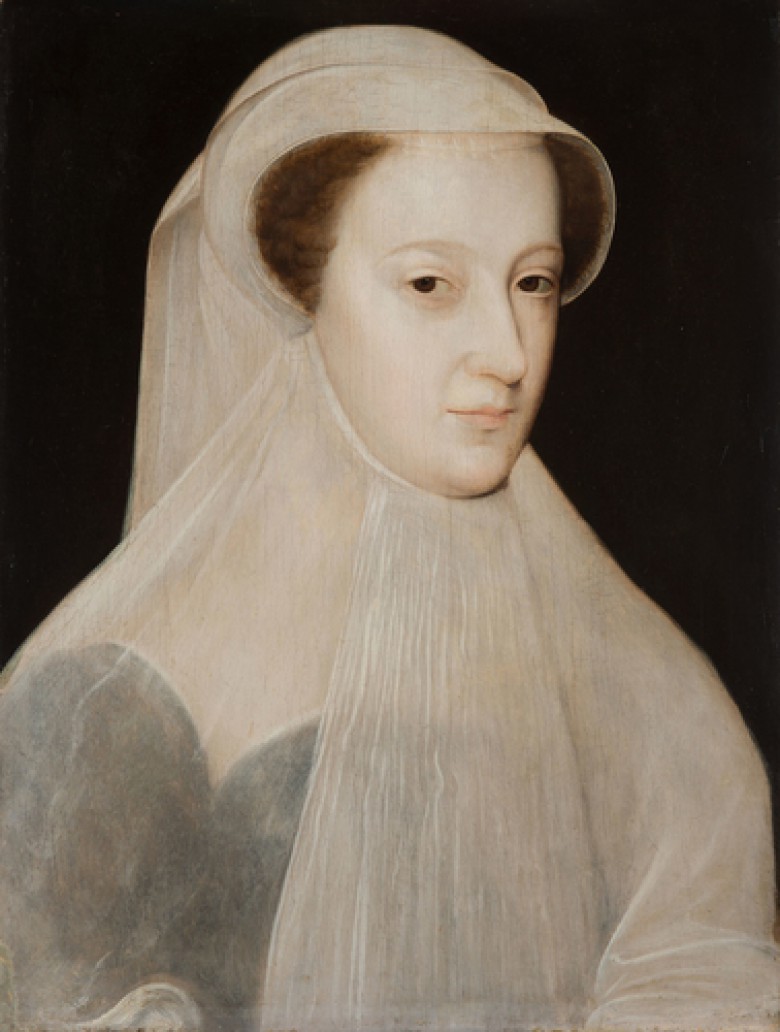8th December 2018
Today in 1542, Mary Queen of Scots was born at Linlithgow Palace. Only six days later, her father James V died and as his only living legitimate child, the newborn baby Mary became queen of Scotland. When she was five years old, Mary was betrothed to Francis, the Dauphin of France and sent to live in the opulent French court, ready to become queen of France as well as Scotland.
Mary also had a claim to the English throne through her grandmother Margaret Tudor, Henry VIII’s sister. Upon the death of Mary I in 1558, the French king Henri II claimed the title of queen of England for his daughter-in-law – a huge insult to the recognised heir Elizabeth I. The well-known Protestant Elizabeth was unpopular with many Catholics who saw Mary as the rightful queen, especially with the backing of the powerful French monarchy. Whilst Elizabeth successfully took the throne and proclaimed peace with Scotland and France early into her reign, it’s unlikely she ever forgot this insult, just as Mary never forgot her strong claim to the English crown.
The young Francis succeeded his father as king of France but he and Mary ruled for less than two years – Francis died and Mary was widowed at eighteen years old. She returned to Scotland and attempted to govern a deeply divided country, while also pressing her claim to the English throne and hoping the unmarried and childless Elizabeth I would name her as heir presumptive. Elizabeth, however, famously refused to name any heir.

When Mary later remarried, she did so to another with a claim to Elizabeth’s throne – her English cousin Henry Stuart, Lord Darnley. The marriage made her an even more attractive alternative to Elizabeth, especially when they had a son – James.
Mary’s rule in Scotland eventually ended in catastrophe. Darnley was murdered, and Mary swiftly married James Hepburn, Earl of Bothwell: the man generally thought to have been responsible for Darnley’s death. The marriage was hugely unpopular and the nobility turned against Mary, forcing her to abdicate her throne and imprisoning her. Scotland once again had a child monarch - Mary’s one year-old son, James VI.
When she escaped imprisonment in Scotland and fled to England seeking help from Elizabeth, Mary was disappointed. Elizabeth placed Mary under house arrest, deciding inaction was the safest route for her to take. She was suspicious of Mary and fearful of the Catholic support she could raise if released, but Elizabeth was also unwilling to do any harm to a fellow queen. Mary never forgot her status and claim to the English throne, and she remained a difficult issue for Elizabeth. For nineteen years she was imprisoned in England, and was eventually executed after she was implicated in a plot to assassinate Elizabeth.
Mary was never named Elizabeth’s successor but after her death, and with the English queen growing old, eyes turned towards Mary’s son, James VI. Elizabeth’s advisors began to quietly pave the way for his succession, even if Elizabeth would never name him heir herself. When she died in 1603, the transition from Tudor rule to Stuart was surprisingly peaceful. James VI of Scotland was now also James I of England with the Union of the Crowns, and the new dynasty that began with Mary Queen of Scot’s son would rule for over 100 years.
Image: Mary, Queen of Scots (1542-87), by François Clouet, c.1560-61, RCIN 403429, Royal Collection Trust / © Her Majesty Queen Elizabeth II 2018
